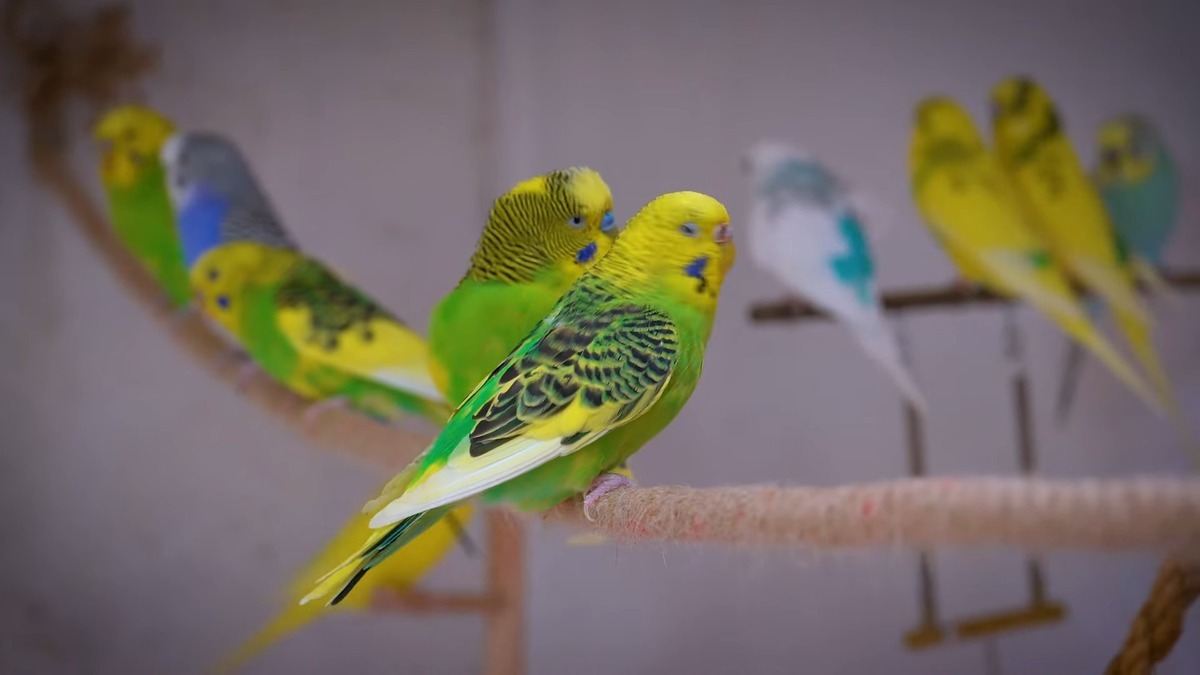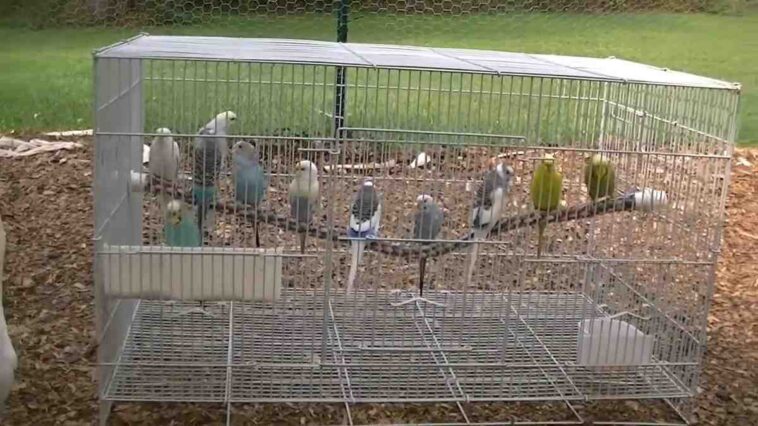Parakeets are delightful and intelligent birds that bring joy to many households. While they thrive in indoor environments, there may be instances when you want to let your parakeet explore the great outdoors. However, ensuring their safety is paramount to preventing potential harm or mishaps.
This guide will discuss essential precautions, training techniques, and potential dangers to consider when allowing your parakeet to venture outside.
How Can I Ensure My Parakeet’s Safety Outside?
Parakeets are intelligent and social birds that can benefit from spending time outdoors. However, taking necessary precautions is crucial to ensure their safety and well-being.
1. Create a Safe Outdoor Space
Before allowing your parakeet to explore the great outdoors, creating a safe and enclosed environment is essential. Here are some key considerations:
- Screened Porch or Aviary: If possible, provide your parakeet with access to a screened porch or aviary. These spaces offer protection from predators while allowing your bird to experience fresh air, sunlight, and natural sights and sounds.
- Secure Fencing: If you can’t access a screened porch or aviary, you can create a safe outdoor space using strong mesh or wire fencing. Ensure the fencing is secure and predator-proof to prevent unwanted visitors from entering the area.
2. Identify and Remove Potential Hazards
Even in a controlled outdoor space, potential hazards may pose risks to your parakeet’s safety. Take the following steps to identify and remove any potential dangers:
- Toxic Plants: Some plants and flowers are toxic to birds. Before allowing your parakeet outside, familiarize yourself with the common toxic plants in your area and ensure they are not in the outdoor space. Remove or relocate any poisonous plants to eliminate the risk of ingestion.
- Sharp Objects: Inspect the outdoor area for any sharp objects or potential hazards that could cause injuries to your parakeet. This includes items like nails, screws, or exposed wires. Remove or secure these objects to create a safe environment.
- Chemicals and Pesticides: Avoid allowing your parakeet to access areas treated with chemicals or pesticides. These substances can be toxic to birds. If you need to use any chemicals in the vicinity, ensure they are bird-safe and follow the manufacturer’s instructions carefully.
3. Monitor Weather Conditions
Weather conditions can significantly impact your parakeet’s well-being when they are outside. Consider the following factors before allowing your bird to venture outdoors:
- Temperature: Parakeets are sensitive to extreme temperatures. Avoid letting them outside during excessively hot or cold weather. Monitor the temperature and choose mild days when the weather is pleasant and comfortable for your parakeet.
- Direct Sunlight: While exposure to sunlight is beneficial for birds, too much direct sunlight can lead to overheating. Ensure that the outdoor space provides areas of shade where your parakeet can retreat if they feel too warm.
- Rain and Wind: Heavy rain and strong winds can be stressful for your parakeet. Avoid letting them outside during inclement weather conditions to prevent discomfort and potential health issues. If your parakeet gets wet, ensure they have access to a warm and dry area to avoid chilling.
4. Supervise Outdoor Time
Whenever your parakeet is outside, it’s important to supervise them closely. Here’s why it’s crucial:
- Predator Protection: Even in a secure outdoor space, predators may threaten your parakeet’s safety. By being present and attentive, you can deter predators from approaching and intervene quickly if necessary.
- Behaviour Monitoring: While outside, your parakeet may exhibit new or different behaviours. By observing their actions, you can better understand their preferences, reactions, and signs of distress. This can help you adjust their outdoor experience to suit their needs.
5. Train Your Parakeet to Come Back Inside
Teaching your parakeet to come back indoors when they are outside is an important safety measure. Follow these training techniques:
- Positive Reinforcement: Use positive reinforcement to train your parakeet to respond to a specific command or sound that signals it’s time to return inside. Offer treats, praise, or affection when they comply with the command.
- Start with Short Distances: Begin the training in short distances from the outdoor space, gradually increasing the distance over time. This allows your parakeet to become familiar with the process and associate the command with returning indoors.
- Designate a Safe Indoor Space: Create a designated area inside your home where your parakeet feels secure and comfortable. Ensure this space has fresh water, food, toys, and other familiar items that make it an inviting place for them to return to.
6. Handling a Lost or flown-away parakeet
Despite all precautions, there is still a possibility of your parakeet getting lost or flying away. Here’s what you can do in such situations:
- Remain Calm: Feeling panicked if your parakeet goes missing is natural. However, staying calm will help you think clearly and take appropriate action.
- Search the Area: The immediate vicinity where your parakeet was last seen. Call out their name and listen for any response. Check nearby trees, bushes, or hiding spots where they may have sought refuge.
- Inform Local Authorities and Neighbors: Notify local animal shelters, veterinarians, and bird clubs about your lost parakeet. Provide them with a detailed description and any identifying features. Contact your neighbours, who may have seen or found your bird.
- Utilize Social Media and Online Platforms: Harness the power of social media and online platforms to spread the word about your missing parakeet. Share their photo, description, and contact information on community groups and lost pet websites. This can help mobilize a larger network of people keeping an eye out for your bird.
- Flyer Distribution: Create and distribute flyers with your parakeet’s photo, description, and contact details. Post these flyers in the vicinity where your bird was last seen and in local pet stores, community centres, and other high-traffic areas.
- Stay Hopeful: Don’t give up hope too soon. Parakeets have been known to find their way back home, even after being missing for extended periods. Continue your search efforts, remain vigilant, and keep in touch with local resources that may help facilitate your bird’s safe return.
What Precautions Should I Take Before Letting My Parakeet Outside?

Before letting your parakeet outside, taking certain precautions is crucial to ensure their safety. Here are some essential steps to consider:
- Secure the environment: Create a safe and enclosed space, such as a screened porch or aviary, where your parakeet can explore without escaping. This prevents them from flying away or encountering potential dangers.
- Ensure proper identification: Provide your parakeet with proper identification, such as leg bands or microchips. This will greatly increase the chances of a safe return if your parakeet gets lost outside.
- Check the weather conditions: Ensure the weather is suitable for your parakeet. Avoid extreme temperatures, strong winds, or heavy rain, as these conditions can harm your bird’s health.
- Remove potential hazards: Inspect the outdoor area for potential dangers, such as toxic plants, sharp objects, or harmful chemicals. Remove or secure these hazards to prevent any harm to your parakeet.
- Supervise your parakeet: Always keep a close eye on your parakeet while they are outside. Never leave them unattended, as this increases the risk of accidents or encounters with predators.
How Can I Train My Parakeet to Come Back Inside When It’s Outside?
Allowing your parakeet to spend time outside the cage can enrich you and your feathered friend. However, ensuring that your parakeet returns indoors when needed is crucial for its safety and well-being.
1. Establish a Bond
Building a strong bond with your parakeet is essential before attempting any training. Spend time regularly with your bird, talking softly, offering treats, and providing gentle physical contact. This will help your parakeet associate you with positive experiences and create a foundation of trust.
2. Create a Safe Environment
Before allowing your parakeet outside, ensure the surroundings are secure and free from potential dangers. Remove toxic plants, secure windows and doors, and cover mirrors to prevent confusion. Also, avoid exposing your parakeet to extreme temperatures, drafts, or strong winds.
3. Introduce the Outdoors Gradually
Begin by introducing your parakeet to the outdoors in a controlled manner. Use a small outdoor aviary or a secure cage that protects while allowing your bird to experience the sights and sounds of the outside world. Spend time together in this controlled environment, gradually increasing the duration of outdoor sessions.
4. Train with Positive Reinforcement
Positive reinforcement, including parakeets, is key when training any animal. Use treats or portions of your parakeet’s favourite food to reward desired behaviours. Start by teaching your parakeet a recall command, such as “Come” or “Inside,” in a calm and encouraging tone.
5. Encourage Step-up Training
Teach your parakeet to step up onto your finger or a designated perch inside the cage. This command becomes vital when it’s time to bring your bird back indoors. Practice step-up training regularly and reward your parakeet each time it successfully steps up.
6. Train Recall Command Indoors
Once your parakeet has mastered step-up training, begin practising the recall command inside your home. Start by standing short from the cage and calling your parakeet using the recall command.
When your bird responds and comes to you, provide positive reinforcement through praise and rewards.
7. Gradually Transition to Outdoor Recall
Once your parakeet is comfortable responding to the recall command indoors, it’s time to start transitioning to outdoor recall training.
Begin in a familiar and secure outdoor space. Use the recall command in the same calm and encouraging tone as indoors, rewarding your parakeet with treats and praise when it returns to you.
8. Utilize Visual Cues
To assist your parakeet in identifying the desired landing spot, use visual cues such as a brightly coloured flag or a specific perch. Place the visual cue near the door or designated entry point to guide your parakeet’s return.
9. Practice Patience and Consistency
Training your parakeet to return inside may take time and patience. Consistency is crucial, so establish a routine and stick to it. Practice recall training regularly, gradually increasing distractions and distance as your parakeet becomes more adept at returning indoors.
Conclusion
Allowing your parakeet to explore the outdoors can provide them with mental stimulation and a change of environment. However, it is essential to prioritize their safety during these outdoor adventures.
By following the precautions outlined in this guide, protecting your parakeet from predators, and taking prompt action if they become lost, you can ensure their well-being while enjoying the benefits of outdoor exploration.
